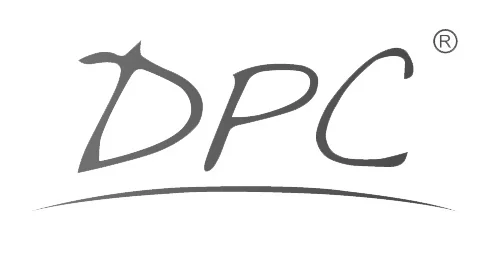Palm Oil
Elaesis guineensis. Obtained from the fruit or seed of the palm tree. A reddish yellow to dark, dirty red. A fatty mass with a faint violet odor. On the basis of available data, the CIR Expert Panel concludes that it is safe as used in cosmetic formulations. No known toxicity.
Panax Ginseng
Root of the ginseng plant grown in China, Korea and The United States. It produces a resin, a sugar starch, glue, and volatile oil. Widely used in oriental medicine as an aromatic bitter. It is used in American cosmetics as a demulcent. No known toxicity.
Panthenol
Dexpanthenol. Vitamin B Complex Factor. Widely used in hair products and emollients and as a supplement in foods. It is good for human tissues. No known toxicity.
Pantothenyl Triacetate
Panthenol. Dexpanthenol. Vitamin B Complex Factor. Widely used in hair products and emollients and as a supplement in foods. It is good for human tissues. No known toxicity.
Paraffinum Liquidum
Obtained from the distillate of wood, coal, petroleum or shale oil. Colorless or white, odorless, greasy and not digestible or absorbable in the intestines. Pure paraffin is harmless to the skin.
Peg-30 Stearate
Widely used emulsifying ingredients. Polyethylene.
Peg-32
Polymers of ethylene oxide. Usually, a waxy compound. The number refers to the liquidity; the higher the number, the harder the composition.
Peg-36 Castor Oil
Emulsifiers. Polymer prepared from butyl alcohol with propylene glycol.
Peg-40 Hydrogenated Castor Oil
Used as a wax. It is a binder, plasticizing ingredient, solvent and softener widely used for cosmetic cream bases and pharmaceutical ointments. Improves resistance to moisture and oxidation. It forms a tough, shiny film when dried. Soothing to the skin.
Peg-6
Polymers of ethylene oxide. Usually, a waxy compound. The number refers to the liquidity; the higher the number, the harder the composition.
Peg-8
Polymers of ethylene oxide. Usually a waxy compound. The number refers to the liquidity; the higher the number, the harder the composition.
Phenoxyethanol
Oily liquid with a faint aromatic odor and a burning taste derived from treating phenol with ethylene oxide in an alkaline medium. Widely used as a fixative for perfumes, bactericide, insect repellent and topical antiseptic. Also used as a fragrance. It is in many cosmetics. It has not been found to be a skin irritant or sensitizer. The CIR Expert Panel concludes that it is safe as a cosmetic ingredient as currently used.
Pollen Extract
An extract of flower pollen.
Polysorbate 20
Widely used emulsifiers and stabilizer. Polysorbate- 20 is a viscous, oily liquid derived from lauric acid. It is an emulsifier used in cosmetic creams and lotions and a stabilizer of essential oils in water. It is used as a nonionic surfactant. The CIR Expert Panel concludes that these are safe as cosmetic ingredients as currently used.
Polysorbate 60
Condensate of sorbitol with stearic acid. Waxy and soluble in solvents. The CIR Expert Panel concludes that these are safe as cosmetic ingredients as currently used.
Polyvinyl Alcohol
Synthetic resins used in various cosmetics. A polymer prepared from polyvinyl acetates by replacement of the acetate groups with the hydroxyl groups. Dry, unplasticized polyvinyl alcohol powders are white to cream-colored and have different viscosity. Solvent in hot and cold water, but certain ones require alcohol-water mixtures. The CIR Expert Panel concludes that it is safe as a cosmetic ingredient as currently used.
Polyvinylpyrrolidone
PVP. 1-Vinyl-2-Pyrrolidone. Abbreviation for a faintly yellow, solid, plastic resin resembling albumen. Used to give a softer set. The CIR Expert Panel says based on available data, it is safe as a cosmetic ingredient.
Potassium Thiocyanate
An inorganic salt used in moisturizers. Colorless or white crystals.
Ppg-25 Laureth 25
Polypropylene glycol and polyoxypropylene glycol.
Ppg-26 Buteth 26
Emulsifiers. Polymer prepared from butyl alcohol with propylene glycol.
Propylene Glycol
1,2- Propanediol. One of the most widely used cosmetic ingredients, it is a clear, colorless, viscous liquid, slightly bitter-tasting. It is the most common moisture-carrying vehicle other than water itself in cosmetics. It has better permeation through the skin than glycerin and is less expensive, although it has been linked to more sensitive reactions. Absorbs moisture, acts as a solvent, and a wetting ingredient. The CIR Expert Panel says based on available data, it is safe as a cosmetic ingredient in concentrations up to 50%.
Propylparaben
Propyl p-Hydroxybenzoate. Developed in Europe, the esters of p-hydroxybenzoic acid are widely used in the cosmetic industry as preservatives and bacteria and fungus killers. They are active against a variety of organisms, are neutral, low in toxicity, slightly soluble and active in all solutions, alkaline, neutral or acid. Used medicinally to treat fungus infections.
